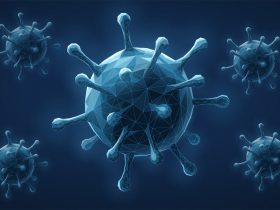A combination of factors is responsible for making the impact of COVID-19 outrageous. The high infectious potential of this RNA virus paired with the gigantic (global) mobility of a huge number of people resulted and is still resulting in distributing of the virus into many regions of the world.
The virus does not stop in front of the doors of industrialized countries. SARS-CoV-2 (as the viral agent was designated) has an extraordinary broad spectrum of symptoms, reaching from asymptomatic appearance to killing people. The asymptomatic and mild symptoms make the virus carriers to even more powerful spreaders of the infectious agent. Often they are not aware of distributing the virus to other persons. Skiing resorts in the alpine regions serve as deterrent examples where the virus has found optimal conditions for spreading.
A vaccination built on short-term experience
With respect to its first appearance only several months ago, COVID-19 is a fairly unknown disease and thus the medical understanding and countermeasures to combat the disease need to be acquired by the medical community. Effective drugs, although urgently needed, are still in the clinical trials pipeline. The most powerful means to stop the devastating impact would be a vaccine. We see an unprecedented global effort and race in development of a vaccine. Probably and hopefully there will not only be one winner but several manufacturers offering a vaccine. The high pressure and expectations to deliver a vaccine quickly must not outweigh the need for safety and effectiveness testing according to state-of-the-art. And this, most importantly, without risky shortcuts in the approval process.
Realisations about the healthcare system
The COVID-19 thunderstorm is still not over but has clearly revealed that a strong healthcare system consists a bundle of different elements which all contribute together (sometimes interactively) to keep the medical threats as low as possible:
- It became clear how important the number of hospital beds and the sufficient capacity of other critical infrastructure was.
- It was also clear how fragile the supply chain was with respect to personal protective equipment.
- Healthcare policies will have to broaden the spectrum of medical device and medical drug suppliers, both in terms of geographic settlement and in avoiding monopolistic or oligopolistic constellations.
- This will be a big topic because there is the risk that pure economical factors will again regulate the healthcare market after the acute crisis.
- It is also a matter of fact that there are limits to stockpiling vast amounts of medical equipment.
It can be concluded that the role of preventive actions to avoid or to reduce the outbreak of virus infections has to be extremely supported.
This was part 1 of the article.






Leave a Review